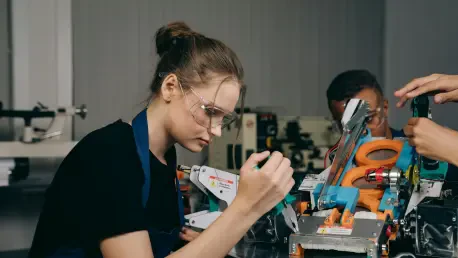In a world where manufacturing operations span thousands of workers and numerous facilities worldwide, workforce management can become a complex challenge. Organizations that rely on traditional HR practices may struggle with inefficiencies and outdated processes that significantly impact productivity and employee satisfaction. The emergence of innovative HR technologies offers solutions tailored to address these unique needs. By leveraging digital tools effectively, manufacturing companies can transform their operational environments to enhance efficiency and improve employee engagement.
HR Technology’s Role in Manufacturing
The demands of modern manufacturing operations have made it essential for HR departments to adopt technological innovations. HR technology aids in navigating challenges such as high employee turnover, ensuring compliance, and fostering an inclusive work environment. For example, digital solutions can automate repetitive HR tasks, provide robust security measures to protect employee data, and create a more engaging atmosphere that values diversity and offers satisfying career paths. This article explores how HR technology can revolutionize workforce management and presents actionable practices to succeed in this endeavor.
Implementing HR Technology: Best Practices
Successful adoption of HR technology requires strategic planning and adherence to best practices. The following sections detail meaningful strategies, supported by real-world case studies, that companies can employ to integrate HR technology seamlessly into their operations.
Streamlining Onboarding Processes
Inefficient onboarding practices can lead to delays, increased workload, and employee dissatisfaction. Employing AI and automation enhances the onboarding experience. Hitachi’s implementation of a customized AI system, for instance, demonstrates how technology can streamline onboarding, reduce time by 40%, and improve retention rates. By automating tasks like form filling and equipment requests, manufacturers can make new employees feel valued and ready to contribute.
Enhancing Recruitment Strategies
Recruitment in manufacturing often faces obstacles such as lengthy hiring times and a lack of diversity. Capitalize on AI and gamification to innovate recruitment processes. Unilever employed a digital recruitment platform featuring video interviews and skill assessments through games, reducing hiring timelines from months to weeks. Such approaches foster an environment that attracts diverse talent and expedites hiring, driving competitive advantage.
Improving Employee Access to HR Services
Allowing employees to easily access HR services is vital, especially in the unique environment of manufacturing. Introducing mobile applications and self-service tools empowers workers by granting them direct access to HR information regardless of shift schedules. Toyota’s deployment of self-service kiosks facilitates access to pay, benefits, and schedules seamlessly throughout its factories, enhancing satisfaction and productivity.
Final Thoughts and Recommendations
While implementing HR technology in manufacturing has already demonstrated tangible benefits, companies must recognize the importance of tailored approaches. Recent experiences show that piloting new technologies in select areas first aids in refining processes and addressing legal and compliance issues before broader adoption. Cross-departmental collaboration involving stakeholders from HR, IT, and business is crucial in creating solutions that deliver value across the organization.
Given the potential of HR technology, manufacturing entities should continually evaluate and adapt these systems to fully realize long-term gains. As companies move forward, embracing Agile methodologies, enhanced feedback systems, and collaborative frameworks will ensure sustained workforce management success. Innovation, customization, and strategic implementation remain essential elements in optimizing HR practices to support the evolving needs of the manufacturing sector.









